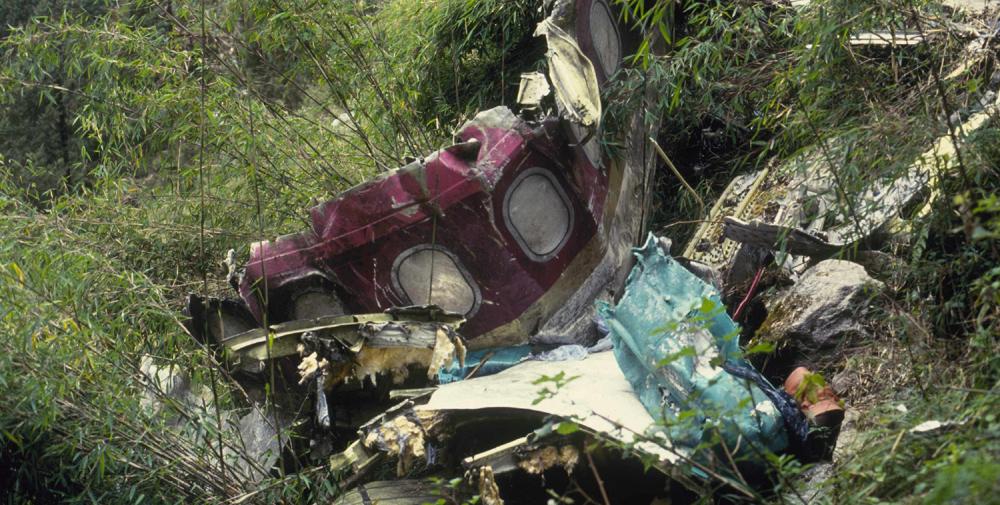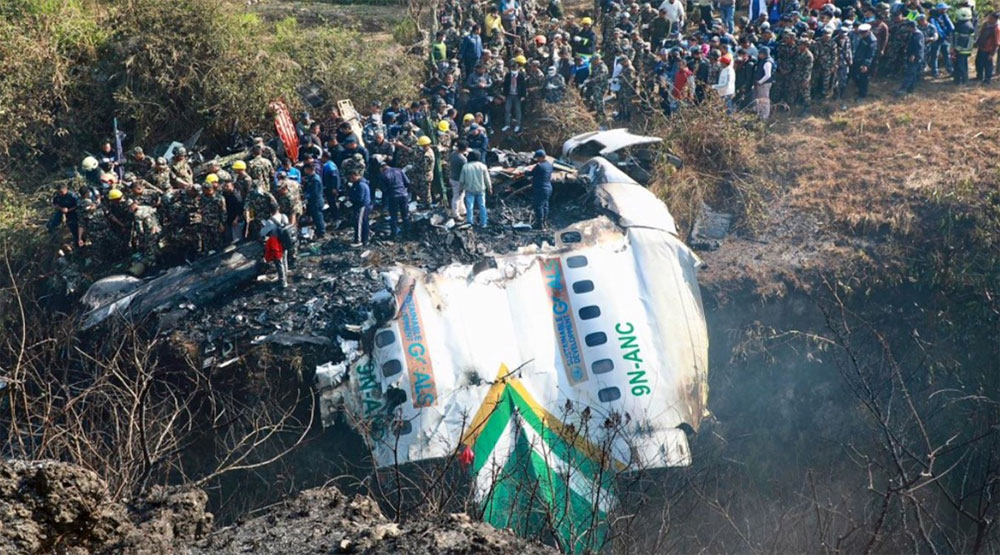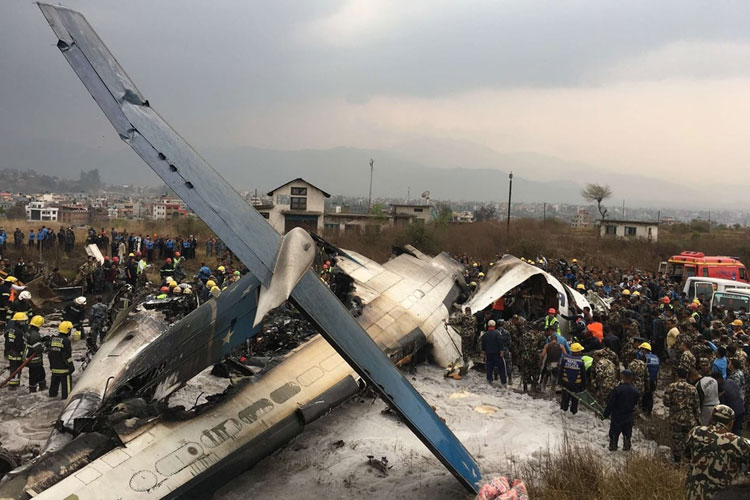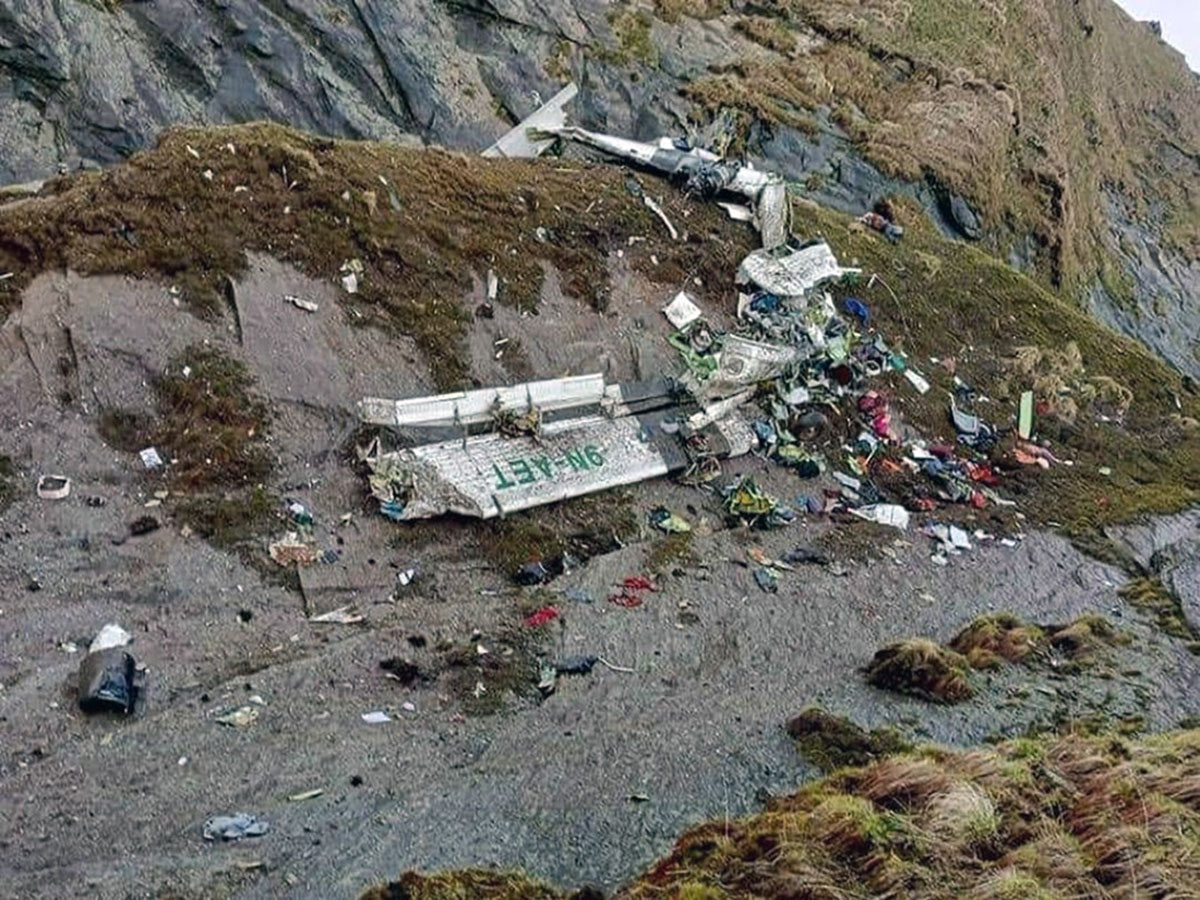Frequent plane crashes expose the Civil Aviation Authority of Nepal's (CAAN) inaction to lower the incident rate. Aviation experts say the causes of most crashes can be traced back to the sloppiness and ineffective methods of the concerned authorities.
Nepal has seen a steep rise in aviation-related incidents in the last decade. Authorities say that the main reasons for such incidents are irregular terrain, bad weather, and human error. However, what remains out of the investigation report after a plane crash, is the negligence of the Civil Aviation Authority of Nepal (CAAN).
Subodh Nepal (Name changed for confidentiality), an aviation student in Texas, says, "No aviation incident can be blamed on old aircraft. I flew my solo on an aircraft manufactured in 1978 AD. It doesn't matter how old the plane is; what matters is the maintenance and airworthiness test, an aspect in which the CAAN needs to improve."
He adds, "Each aircraft requires 200 hours of flight time or two years, whichever comes first, to pass the airworthiness test. Due to lack of workforce, the CAAN is negligent in that aspect of aviation."
Not all incidents are to be blamed for faulty equipment and bad weather. Human error is one factor that shouldn't be ruled out. Two of the most fatal crashes in the history of Nepalese aviation were caused by human error.
The Pakistan International Flight 268 crash-landed on the outskirts of Kathmandu, resulting in the deaths of all 167 people onboard, including the crew members. The crash was a direct result of a miscalculation by the captain during the initiation of the landing sequence.
The Thai Airways TG311 was another incident directly resulting from the captain, first officer, and the ATC personnel's laxity.
Nepal says, "ATC is our eyes outside the aircraft, so the CAAN should be more mindful about licensing personnel without adequate knowledge. Flying is a very sensitive subject. CAAN should formulate strict rules on licensing the engineers and the ATC personnel and ensure its implementation."
Aviation incidents in Nepal with high casualties
1992, September 28: PIA flight 268
The PIA flight 286 crash is considered one of Nepal's most mysterious aviation accidents. The Airbus A300 bound for Kathmandu from Karachi carried 167 people, 155 passengers and 12 crew members.
Shortly after taking clearance from the ATC in Kathmandu airport, the plane crashed into the side of an 8,250-foot mountain, killing all 186 people onboard.
There are several hypotheses on the cause and manner of the disaster. However, a formal inquiry analyzing flight deck voice recordings, assisted by the Canadian Transportation Safety Board (TSB), found that the crew initiated the seven-step descent one step too early. When the plane reported being at 10,000 feet, it was 1,300 feet below the authorized altitude.
 Photo: coolgenx1 via Wilikmedia Commons.
Photo: coolgenx1 via Wilikmedia Commons.
1992 July 31: Thai Airways TG311
A commercial Airbus A310-304 operated by Thai Airways scheduled to Kathmandu from Bangkok crashed at the runway of the Tribhuwan International Airport, killing all onboard, which included 99 passengers and 14 crew members.
An investigation conducted after the crash found that the leading causes of the incident were distress in the cockpit, bad weather and confusion between the first officer and the captain. After the flap fault in the aircraft, the captain, without clearance from the Kathmandu ATC (Air Traffic Control), the pilot changed the course of the plane to the South instead of the North.
As a result of the diverted course, the warning system inside the cockpit alerted the crew about the terrain ahead. The voice recording recovered from the aircraft's black box revealed that the pilot kept going despite the warning and crashed, killing all 113 onboard.
 Photo: Bureau of Aircraft Accidents Archives
Photo: Bureau of Aircraft Accidents Archives
2023, January 15: Yeti Airlines ATR 72-00
An ATR-72 aircraft operated by the local airline company, Yeti Airlines, bound for Pokhara from the capital Kathmandu took off at 10 AM (local time). The Kathmandu tower cleared the aircraft for takeoff as the visibility was 4 KM in Kathmandu and 6 Km in Pokhara during the airport opening at 8:10 AM, according to Yograj Kandel, the CEO of Heli Everest.
While on the final approach on runway 12 of the newly constructed Pokhara International Airport, the aircraft Seems to have entered a steep bank on the right resulting in a stall. Consequently, the twin-engine ATR-72 could no longer fully support the aeroplane's weight, resulting in an accelerated stall after the roll.
The altitude was too low for the pilot to recover the stall. Captain Kamal KC, who had more than 25 years of experience flying in Nepalese sky, steered the plane toward a gorge of the Seti river, between the old and new airports, to save the plane from crashing into a nearby residential area.
The crash caused the aeroplane to engulf in flame resulting in the death of all 68 passengers and four crew members onboard.
 Photo: 1001crash
Photo: 1001crash
2018, March 12: US-Bangla DHC-8-402Q
The de-Havilland Dash 8-400, operated by US-Bangla carrying 67 passengers and four crew members, took off from Dhaka set for Kathmandu. The plane crashed on the runway of the Tribhuwan International Airport during its landing. 49 onboard were killed, and 22 were rescued alive.
The twin turboprop aircraft was authorized to land on Kathmandu airport's runway 02. In response to the crew's request to land on runway 20 (the same runway but in the other direction), the tower permitted the aircraft to land on runway 20. The plane passed barely above the air traffic control tower during its descent for landing.
It landed close to a parked plane, crashed through a fence on the east side of the airport, and dropped into the lower terrain. The aeroplane was engulfed in flames.
 Photo: 1001crash
Photo: 1001crash
2022 May 29: Tara Air DHC-6
A de Havilland DHC-6-300 Twin Otter operated by Tara Airlines scheduled for a STOL (Short Takeoff and Landing) flight from Pokhara to Jomsom crashed in a mountainous area on Jomsom.
Deemed one of the worst domestic aviation accidents in Nepalese history until the 2023 Yeti Airlines crash; the crash claimed the lives of all 19 passengers and three crew members. An investigation after the crash found that the bad weather was a deciding factor in the accident that killed all 22 people onboard.
 Photo: 1001crash
Photo: 1001crash